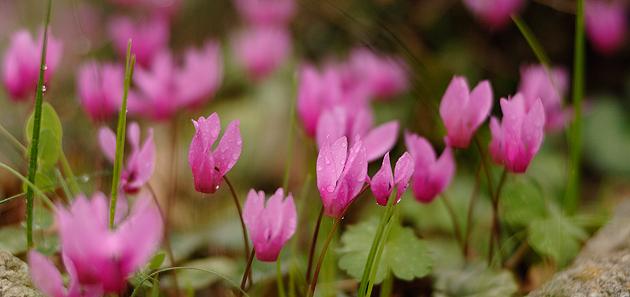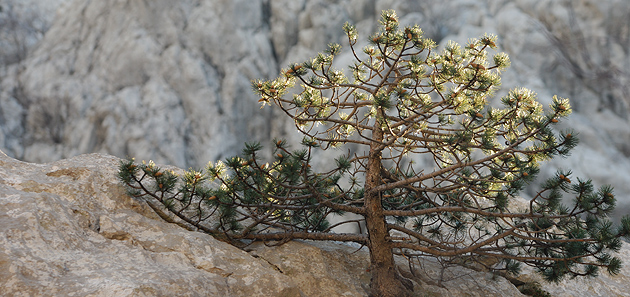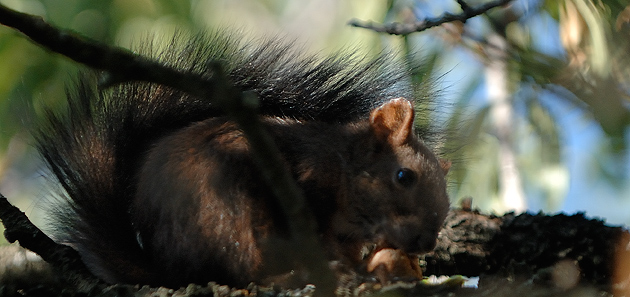



Nature › Flora and fauna
In addition to an exceptional geomorphology and relief that is immediately noticed by the visitors, Velebit and Paklenica also have an rich and diverse flora. Particularly valuable are forest communities of black pine (Pinus nigra) that are one of the largest on the Mediterranean. According to the latest inventarisation of flora, Paklenica is inhabited by more then a 1.000 of different species that represent an exceptional wealth on the small area of 95km2 which is the area of the Park itself.
The combination of Mediterranean, continental and alpine climates and the fact that Nature Park Velebit stretches from 10 to 1.757m above sea level have led to the emergence of microclimatic localities, appropriate for the growth of many endemic plants, even 79 species. Some of them are: Sandwort (Arenaria orbicularis), Adriatic Bellflower (Campanula fenestrellata), meadow saffron (Crocus malyi), Velebit degenia (Degenija velebitica), Croatian Sand Rock-Cress (Sibiraea altaiensis ssp. Croatica), Kitaibel/s primrose (Primula kitaibeliana),...
Equally valuable is the animal world with 1.500 species int he National Park Paklenica that have been known up to now. Birds are probably the most interesting part of Paklenica`s fauna. So far, 236 bird species have been recorded out of which 156 species reside within the Park limits(95km2). Some have been very rare, birds of prey in particular, like the Golden Eagle(Aquila chrysaetos), the Short-toed Eagle (Circaetus gallicus),the Goshwak (Accipiter gentilis), the Kestrel (Falco tinnunculus), the Sparrowhawk (Accipiter nisus),...
Among 50 or so registered species, the most diverse are bats with 16 species and there is a significant number of Fat Dormouses and Eurasian Red Squirrels. Velebit is home of many endagered speacies, like the wolf, lynx and otter. The brown bear (Ursus arctors) is the largest land carnivore that resides here, although, it satisfies 95% of its dietary needs with plant foods.
Walking through Paklenica you will notice beautiful butterflies, especially in the spring. The most invertebrates are surely the diurnal butterflies that inhabit the blossoming meadows and edges of forests, their various colours have always raised visitor`s attention. Among the numerous species we can single out the Southern Festoon (Zerynthia polyxena), the Scarce Swallowtail (Iphiclides podalirius) and the Swallowtail (Papilio machaon).






